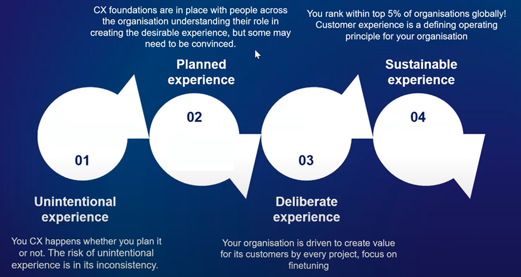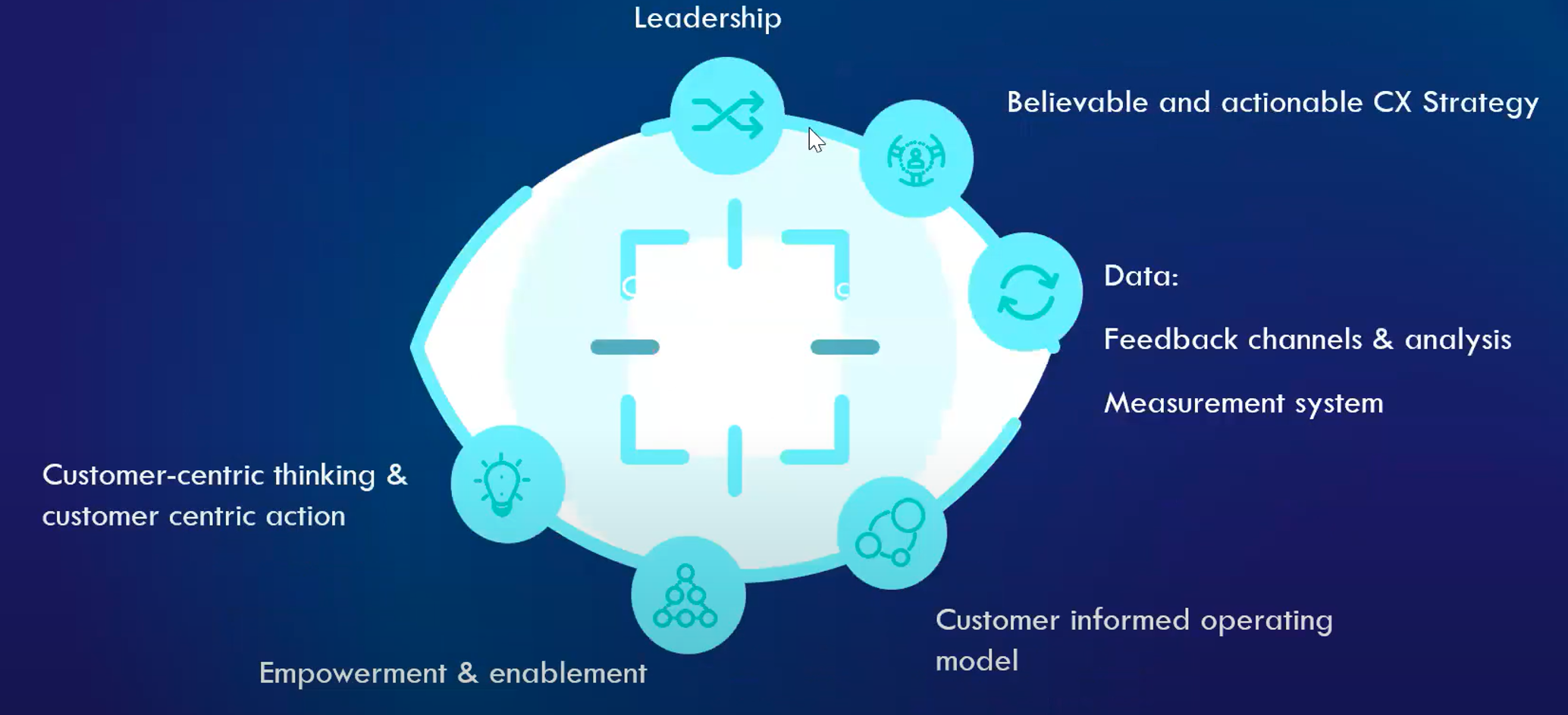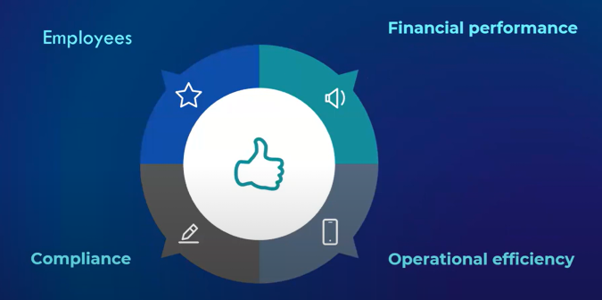#UnbossersNetwork #Customerfirst
How to create an environment for customer-centricity

by Kris Debisschop, PhD – Unbossers Fellow
The Unbossers Network is bringing together 11 influential leaders of corporate change, alongside their colleagues from esteemed organizations to forge connections with companies that have successfully intertwined business success with a genuine concern for both their people and society. Below we share some eye-opening insights, distilled from the online debate we organized with Unbossers Fellow Olga Potaptseva, Top 15 Global CX Influencer.
“Yes, we are customer-centric!” Not (yet).
It must be one of the most prominent questions in today’s business world: How can I enable more customer and human-centricity in my organization?
In theory, every company says ‘Yes, we are customer-centric!’. At the same time, a lot of companies struggle with the practicalities of customer-centricity. Just look at their processes, ways of decision making, ways of measuring success, ways of rewarding people or even the board agenda: most of this is rather organized from an inside-out perspective than customer oriented … . Does it mean customer-centricity is an urban myth? Hell no!
Before diving into the eye-opening insights from Olga’s webinar on the enablers to make customer and human centricity really work, let’s establish some definitions first:
- customer-centricity: a philosophy in the organization, a way of organizational thinking where every decision is guided (not dictated!) by customer needs. Being customer-centric does NOT mean doing anything and everything that the customer wants you do to: it’s dangerous to think so, it’s expensive and just … impossible!
- customer-centric culture: a corporate culture where the customers’ experience and satisfaction are always put first and at the core of the organization’s business activities, processes and future plans. It is also a culture where customer satisfaction is the responsibility of every employee in the organization
- customer experience (CX): the perceived quality of interactions that your customers have from start to finish: from the moment they learn about your company up until they end their relationship
- customer service: one of the touch points that delivers customer experience. Alongside customer service, you have many other touch points like sales, digital, emails, physical stores and other points of interactions.
CX Maturity Stages

Despite sounding easy on the surface, a true customer-centric culture delivering sustainable CX is difficult to achieve organization wide. According to Berkeley University, only 5 to 10% of companies operate this way. This highest level of CX maturity, with CX being a defining operating principle of the organization, is preceded by three others stages:
- Stage 1 – Unintentional experience: your CX ‘just happens’ and in a inconsistent way
- Stage 2 – Planned experience: people conceptually understand that value of CX, but not everyone (especially the non-customer facing functions like legal, IT and finance) in the organization does contribute to it or wonder why they should
- Stage 3 – Deliberate experience: your company has declared it’s customer-centric intent, it has communicated that intent to all the employees, people know how to translate it into their job roles and they’re driven by creating value to customers. Mostly, the processes, technologies and operating model are aligned to customer needs, but there is still room for fine tuning of this so-called customer-informed operating model.
Contrary to the previous stage, here the legal person for example understands that getting a contract wrong might have a big impact on CX and that he’s responsible for it. And even if it doesn’t damage the customer experience, it could damage his/her colleagues’ experience because they may have to sort out the mistakes that may have occurred or the inaccuracies or misunderstandings in all the back office functions.
About 80% of the companies are somewhere between Stage 1 and Stage 2. So how to move forward to Stage 4 Sustainable CX? Here’s where six enablers of a successful CX ecosystem come in, all starting with CX leadership. It’s much worthwhile if you consider them: according to Forbes for example, customer-centric companies are 60% more profitable than companies that don’t focus on customers. Brands with superior CX bring in almost 6 times more revenue than competitors that lag in customer experience.
Six enablers for a customer-centric ecosystem
Six enablers of a customer-centric ecosystem

1. Leadership: Give CX an executive priority and be purposeful
You cannot be customer-centric if the customer experience is not an executive priority: always look for a reason how a decision would benefit a customer and with that set the right intent. If you, as leader, are customer obsessed, the rest of your organization will follow. But the leadership needs to buy into customer-centricity first. In a lot of companies, this is a tough first hurdle to take.
Besides setting the right intent, here are four other things to do as a leader as related to CX:
- reduce the power gap and bring decision authority where the information is (mostly your frontliners operating within the guard rails of your CX strategy and compliance)
- listen not just to your customers, but also to your employees, what they know about the customer and what they need to satisfy customers’ demands
- with that, communicate appropriately
- finally, when building the CX experience, always have your company’s purpose in mind. This should be your way of acting responsibly not just for what you do or what your company does, but also for the entire ecosystem (customers, employees, suppliers, partners and the society as a whole). Then we are talking about total experience and not just customer experience.
2. CX strategy: Be super clear and make your CX strategy actionable
Customer-centricity is about CLARITY: what is it that we are for our customers and what is it that we are not. In essence: get clarity and be clear about (1) who’s your customer, (2) what their needs are and (3) the promise that you make to the customers. Develop and communicate your CX strategy accordingly and then make sure that your operations are geared up to deliver on that promise. That’s the way to go.
Take the example of Ryanair. You could say they are far from being customer-centric or being good at customer service. But Ryanair is extremely good at setting expectations of what they promise you: a safe flight from A to B at the lowest possible price. That’s their intent and it’s super clear: we are a low cost airline and this is what you should expect from us, so no extras like food or seats with extra leg length. That’s the social contract you sign with them (implicitly taking the imperfections of customer service for granted).
Your CX strategy should be considered relevant and believable, not only to your customers but also to your employees and all other partners in your CX ecosystem. Important as well is that the CX strategy is clear, actionable and easily transferable to all people in the organization. Here’s where Disney excels at. The biggest problem for such amusement parks is staff turnover and staff training because it’s a seasonal business and a lot of people come and go all the time. So they have to have their CX strategy super simple. Disney has four principles, in this order and priority: (1) safety, (2) courtesy, (3) entertainment and (4) efficiency. So safety first, next showing the courtesy to get for example older people board a roller coaster and buckle up. Only then will there be room for entertainment for the roller coaster operator, with efficiency being less of a priority (than entertainment).
To build your CX strategy, you could organize workshop sessions with your leadership team, or even better invite employees across departments, customers, regulators, suppliers etc to these sessions and apply the open strategy technique we talked about in one of our previous blogs.
3. Data: There is more than surveys and get rid of NPS addiction
There are two components of data to consider when looking at CX:
- Feedback channels: data coming from the customer (the voice of the customer) typically coming from surveys, but also from other data like Google reviews, contact center interactions, sales conversations, …
- Analysis measurement system: the voice of the customer has to be supplemented with the voice of the process data, the voice of the employees and voice of the business is the ultimate proof of making sure having a viable business.
The importance of having clear who your customer is and what he actually needs has already been addressed above. Consumers are very capable of highlighting what it is that they need. But what we usually ask customers in surveys: “Are you willing to recommend us?”, “Are you satisfied?”, … . This is reflecting an inside-out perspective, often due to the use of the net promoter score (NPS) as the ultimate KPI for customer satisfaction. What you are actually asking is “Are you happy to do something for us, our company”, maybe even before having asked if you’re happy that we’ve done something for you … No wonder that response rates on surveys have been going down and down over time! Surveys are also a touch point, it’s a point of interaction.
Think of your latest check-out after a hotel stay: did the hotel receptionist ask you “Was the shower OK?”; “Were the pillows and the bed comfortable?”, … . If he/she did, then he/she was taking an outside-in perspective by collecting measurements about the needs that are truly relevant to you as the hotel resident: a good shower, a nice, comfortable bed etc. That’s what you care about.
Voices of the customer-centric ecosystem

Saying that you would put the customer and nothing else at the center of everything is hardly a winning strategy. Besides listening to the voice of the customer, you also have to listen (and act upon) the voice of compliance, your financial performance, your operational efficiency and employees. Your customer is only one part of that customer-centric ecosystem that must inform what you do.
4. Customer informed operation model: If you don’t do the basics right, you don’t have the right to delight
A customer-informed operating model is an operating model that looks at the customer journey first and then builds processes and systems to meet the needs and demands in the customer journey.
Customer Journey Mapping is a way to look at the organization from the outside-in. It is very rare that companies structure themselves according to the different phases of the customer journey: “I discover, I purchase, I get support, I repurchase”. Most companies are talking about and structuring themselves according to: “We sell”, “We support”, “We do IT systems”; “We do financial systems“, etc.. While the right thing to do is so-called Customer Journey Management: aligning all different functions to deliver customer outcomes according to the CX strategy.
It is important to distinguish between your CX basics and nice-to-haves. About 60% of organizational effort has to be spent on satisfying basic customer needs. It is very simple: if you don’t do the basics right, you don’t have the right to delight.
Coming back to the hotel example. What are your basic needs from a hotel? Having a good night sleep and a good shower. Imagine you enter your hotel room and a bed is not there, how would you feel? Pretty angry and you probably go and complain about it! If at the same time you have fresh flowers in your room, that would be aggravating. That’s not a good experience. Before you can add fresh flowers into the customer experience, make sure the bed is there!
Here’s the thing: satisfying the basic needs of your customers is NOT where you make money. It is not a differentiator but responding to an (generally) expected level. This is where you have to look at efficiencies without compromising the customer experience of course. Here’s where AI, automation, process improvement efforts, etc. needs to come in, really trying to get things done at the lowest possible cost whilst maintaining customer satisfaction.
Your CX delight factors, there is where you (should) differentiate and where you can make margin as a company. Delight factors are those factors that customers would recommend you for, that they would remember! Maybe for something that they would even know that they want.
If efficiencies are right, delight factors are right, then you can spend money on building relationships with your customers (e.g. by owning mistakes committed by customers).
5. Empowerment & enablement: EX must precede CX
As already mentioned, the voice of the customer is one of several voices of the customer-centric ecosystem to be taken into consideration. Truly damaging, not only for customer satisfaction, is the mindset of employees saying: “I know what’s wrong, no one listens and I can’t do anything”.
Human centricity precedes customer-centricity; a high employee experience (EX) score is one of the preconditions of a high customer experience score. It is wrong to keep your customers happy at the expense of your employees.
Two things are important here:
- people in the organization being passionate and driven about positively contributing to satisfy the customer and being empowered to do so (e.g. by holding decision taking authority or being invited to being part of a so-called Design Tribe to resolve pain points they and/or the customers are facing)
- having the right, well-functioning processes, technologies and systems enabling EX and CX
6. Customer-centric culture: Go for CX micro-actions (by everyone)
In a customer-centric culture, the customers’ experience and satisfaction are always put first and at the core of the organization’s business activities, processes and future plans. It is also a culture where customer satisfaction is the responsibility of every employee in the organization.
Olga and we, Unbossers, firmly believe in the value of so-called ‘micro-actions’: one or more quick, enjoyable and tailor-made actions that encourage people in the organization during a short period of time, to develop or display certain future desired behavior, as part of cultural transformation or change. You could think of asking people to write down (for example in a company blog) how a CX value impacted their job, by giving examples where it was done well and how it benefited the customer. Or appoint a customer representative in every meeting and give this person, ‘playing the customer’, the mandate (and a safe space!) to unconditionally challenge decisions from a customer’s perspective. This role is comparable to the GenZ Jesters’ role we gave 4 university students in our latest roundtable (read this blog to learn more).
Some final pro tips
- Check where the customer is on your board agenda
- Have a line in your project approval or financial planning form asking for customer value justification
- Give every CX project a ROI measure: CX cannot exist in isolation; it always must be connected to a business outcome
- Only do customer surveys when it actually makes sense and when you know that you’re going to do something with it. Tell the customer what you are going to do with it and how they will be informed
- Check www.cx-panda.com for more insights, tools on CX
Join
our Unbossers Network
Build a people first-organization the unbossed way:
Do you want to learn concrete steps on how to combine the pursuit of business success with putting people first? Just take a look at our Unbossers Network which offers low-key accessibility into global connections and teachings for you and your organisation.
We will be happy to welcome you there!